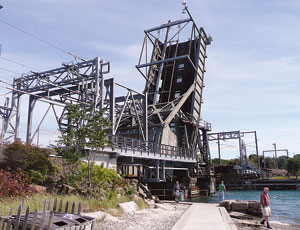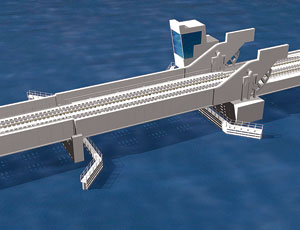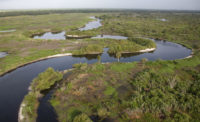At about the 30-day mark since President Obama signed the American Recovery and Reinvestment Act, federal agencies are releasing more of the $787-billion stimulus measure’s construction funding. The Dept. of Energy, Dept. of Transportation and U.S. Environmental Protection Agency on March 12 and 13 detailed plans to distribute more than $1 billion in stimulus aid.


The Dept. of Energy said on March 12 that it plans to release to state and local agencies an initial installment of $777.8 million of its $7.8 billion in stimulus funds for home weatherization and aid to states’ energy offices. The initial distribution includes $471.8 million for weatherization and $307 million for the State Energy Program. DOE’s aid to state energy offices can go for energy-efficiency upgrades for state and local government buildings and also for nonconstruction uses such as rebates for energy audits.
Of the $7.8 billion for the two DOE programs, Texas will receive the largest share of $545.8 million. New York, with $517.8 million, California with $411.9 million, Ohio with $362.9 million and Illinois with $343.8 million, follow.
DOE says the weatherization program will fund an average of about $6,500 per home in energy-efficiency upgrades, such as adding new insulation, sealing leaks and improving heating and air-conditioning equipment. Participation is limited to those who earn up to 200% of the federal poverty level. In most states, the 200% threshold is about $44,000 a year for a family of four.
DOT agencies also have been active on the stimulus front. The Federal Railroad Administration soon will provide Amtrak with the first portion of $1.3 billion from the stimulus for capital projects. Vice President Joe Biden, a longtime Amtrak rider and advocate, told a March 13 press conference that the infusion “will nearly double Amtrak’s investment program over the next two years.”
Amtrak President Joseph Boardman says once a final grant agreement is reached with FRA on stimulus funds, “we’re ready to move very quickly.” He expects work to begin in “just a matter of weeks.” Amtrak anticipates stimulus installments will be released quarterly. The amounts will be based on the railroad’s spending plans. Early installments are likely to be smaller than later ones, tracking projects’ schedules.
Amtrak’s largest stimulus project is a $105-million replacement for a 102-year-old drawbridge over the Niantic River in Connecticut. “Our design is done,” says Boardman. “We’re ready right now.”
Amtrak will use $21 million from the stimulus, plus state and other funds, to restore its Wilmington, Del., station, which was designed by architect Frank Furness and is about 100 years old. Work will include restoring the interior and terra- cotta facade and building a third high-level train platform.
In addition, $10.5 million will fund a new Auto Train station in Sanford, Fla. Much of the old station was destroyed by 2005 hurricanes. Also on Amtrak’s list is $105 million to repair stations, maintenance shops and warehouses. Work will include new roofs, plumbing repairs and heating and air-conditioning upgrades.
The Federal Aviation Administration also announced $12 million in aid to two Pittsburgh-area airports, FAA’s first allocations of $1.1 billion in airport grants from the stimulus. Pittsburgh International Airport receives $10 million for grading, paving and other improvements to one of its four main runways. Allegheny County Airport, which serves general-aviation aircraft, gets $2 million to renovate a taxiway and relocate a ramp. The legislation directs FAA to distribute airport aid on a discretionary basis to local agencies that apply for it. FAA must obligate at least half of the $1.1 billion by June 17.
EPA’s first allocations are $297 million for clean-water projects in four northwestern states as well as tribal governments. Washington receives $11 million; Oregon, $73 million; Alaska, $43 million; and Idaho, $39 million. EPA also is providing $31.4 million for tribal water infrastructure, including $27 million in Alaska and $4.4 million in the Northwest. Funds are distributed through existing state revolving funds and tribal programs.





Post a comment to this article
Report Abusive Comment